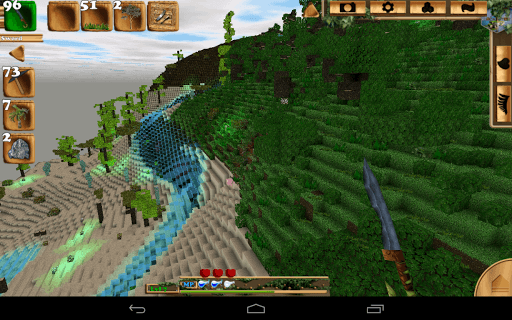In the ever-shifting landscape of the video game industry, few titles have achieved the meteoric rise and cultural saturation of Fortnite. Launched in 2017 by Epic Games, what began as a modest cooperative survival game quickly morphed into a global phenomenon that redefined online gaming, entertainment, and social interaction. It wasn’t just a game; it was a cultural touchstone, a virtual playground, and a marketing juggernaut that captured the attention of hundreds of millions of players worldwide. From schoolyards to celebrity Twitch streams, Fortnite’s influence became inescapable. But how did this happen? The game’s conquest was not a matter of luck but a masterclass in strategic execution, innovative design, and a profound understanding of modern digital culture. It was the result of a perfect storm: a brilliant business model, relentless innovation, and a unique ability to blend gameplay with mainstream entertainment, creating an experience that transcended the screen and became a defining feature of a generation.
The Genesis of a Juggernaut: From Niche Game to Battle Royale King
The story of Fortnite’s global takeover begins not with the iconic Battle Bus, but with a different game entirely. The original concept, now known as Fortnite: Save the World, was a co-op player-vs-environment (PvE) game where teams built forts to defend against zombie-like creatures. It spent years in development and launched in mid-2017 to a lukewarm reception. At the same time, another game, PlayerUnknown’s Battlegrounds (PUBG), was exploding in popularity, introducing the “battle royale” genre to the masses. Epic Games, recognizing the seismic shift in the market, made a swift and audacious decision: they would create their own battle royale mode.
The Pivot That Changed Everything
In a remarkable feat of game development, a small team at Epic created Fortnite Battle Royale in just two months, releasing it as a free-to-play standalone mode in September 2017. This decision was the first crucial pillar of its success. While PUBG cost $30, Fortnite was free, instantly removing the primary barrier to entry for millions of potential players, particularly a younger audience with limited disposable income. This strategy flooded the game with players from day one, creating a massive, vibrant community that was essential for a multiplayer title’s survival.
Furthermore, Fortnite distinguished itself with two key features:
- A Unique Art Style: Unlike the gritty, realistic military aesthetic of PUBG, Fortnite adopted a vibrant, cartoonish art style. This not only made the game more visually appealing and less intimidating to a broader audience but also ensured it could run smoothly on a wider range of hardware, from high-end PCs to older consoles. The lack of blood and gore made it more palatable for parents, further expanding its demographic reach.
- The Building Mechanic: The core building system from Save the World was ingeniously integrated into the battle royale format. This single feature added an unparalleled layer of strategy and skill. Players could instantly construct walls, ramps, and towers for defense, traversal, or gaining a tactical advantage. Mastering building became as important as aiming, creating a high skill ceiling that kept dedicated players engaged while remaining simple enough for newcomers to grasp the basics.
More Than a Game: Building the Metaverse

While the free-to-play model and unique gameplay got players in the door, it was Epic’s vision for Fortnite as an evolving, living world that kept them there. The game was not a static product but a service, a dynamic platform that constantly changed and surprised its audience. This was achieved through a revolutionary approach to live-service gaming.
The Power of Seasons and Live Events
Fortnite introduced the concept of “Seasons,” ten-week-long periods that brought massive changes to the game. Each season had a theme, a narrative arc, and a Battle Pass—a paid tier of cosmetic rewards that players could unlock by playing. This model was brilliant; it provided a steady stream of revenue without ever selling a competitive advantage (a practice known as “pay-to-win”). More importantly, it created a perpetual cycle of hype and engagement. Players eagerly awaited new seasons to see how the map would change, what new weapons would be introduced, and how the cryptic storyline would unfold.
This narrative culminated in spectacular, one-time-only live events that brought the entire community together. These were not pre-recorded cutscenes but real-time, in-game spectacles that players experienced simultaneously. Memorable events include:
- The Rocket Launch (Season 4): The first major live event, where a giant rocket launched and cracked the sky, setting a precedent for the game’s evolving narrative.
- The Marshmello Concert (2019): An in-game virtual concert by the DJ Marshmello that attracted over 10 million concurrent players, proving Fortnite could be a venue for mainstream entertainment.
- “The End” (Chapter 1 Finale): An apocalyptic event where the entire game map was sucked into a black hole, leaving players staring at a cryptic screen for two days. The audacious move generated massive media coverage and social media buzz, building unprecedented anticipation for the launch of Chapter 2.
- Travis Scott’s Astronomical (2020): A visually stunning, psychedelic concert experience that drew over 27 million unique players, solidifying Fortnite’s status as a premier platform for virtual events and a precursor to the “metaverse.”
These events created a powerful sense of “you had to be there,” fostering a deep community bond and an immense fear of missing out (FOMO) that drove consistent player engagement.
The Cultural Juggernaut: Infiltrating the Mainstream
Fortnite’s influence quickly bled from the gaming world into global pop culture. Its iconic dance emotes, like “The Floss” and “Orange Justice,” were performed by kids on playgrounds, athletes in victory celebrations, and celebrities on talk shows. The game became a social hub, a virtual “third place” where friends could hang out, chat, and play, especially for a younger generation growing up online.
The Rise of the Streamer and Celebrity Endorsement

The platform Twitch was instrumental in Fortnite’s rise. Streamer Tyler “Ninja” Blevins became a household name, his skill and personality attracting millions of viewers. The watershed moment came in March 2018, when Ninja streamed himself playing Fortnite with rappers Drake and Travis Scott, and NFL player JuJu Smith-Schuster. The stream shattered Twitch’s viewership records, with over 600,000 concurrent viewers, and catapulted Fortnite from a popular game into a full-blown cultural phenomenon. It legitimized gaming in the eyes of the mainstream media and demonstrated the game’s immense crossover appeal.
This exposure created a virtuous cycle: celebrities played the game, drawing more attention; this created more professional players and streamers, who in turn built larger communities and kept the game in the public consciousness. Fortnite wasn’t just something you played; it was something you watched, talked about, and participated in, even if you weren’t holding a controller.
The Monetization Machine: A Fair and Lucrative Model
At the heart of Fortnite’s long-term success is its revolutionary and ethical approach to monetization. In an era where “loot boxes” and pay-to-win mechanics were heavily criticized, Epic Games devised a system that was both incredibly profitable and widely accepted by players.

The Battle Pass and Cosmetic-Only Microtransactions
The primary revenue driver was the Battle Pass. For about $10, players gained access to a season’s worth of unlockable content, including character skins, gliders, pickaxes, and emotes. Crucially, none of these items offered any gameplay advantage. They were purely cosmetic, allowing players to express their individuality without unbalancing the competition. Players could see exactly what they were paying for, a transparent model that stood in stark contrast to the gambling-like nature of loot boxes.
This was supplemented by an in-game Item Shop with a rotating selection of cosmetic items available for direct purchase using the in-game currency, V-Bucks. The constant influx of new and creative skins, often tied to pop culture collaborations with brands like Marvel, Star Wars, and DC Comics, created a powerful desire for collection and personalization. This strategy allowed Epic Games to generate billions of dollars in revenue from a game that was fundamentally free to play, proving that a player-friendly business model could be immensely successful.
Conclusion: The Blueprint for Modern Success
Fortnite’s conquest of the world was not a single event but the culmination of a series of brilliant, interconnected strategies. It began with a perfectly timed pivot into the battle royale genre, powered by an accessible free-to-play model that built a massive initial player base. It sustained this momentum through relentless innovation, treating the game as an ever-evolving service with seasons and unmissable live events that transformed it into a shared cultural experience. By fostering a vibrant community through streaming and celebrity engagement, it transcended gaming to become a pop culture icon. Finally, its fair and transparent monetization system built trust and loyalty, turning a free game into one of the most profitable entertainment products in history. Fortnite didn’t just take over the world; it provided a new blueprint for what a video game could be—a dynamic social platform, an interactive entertainment venue, and a global phenomenon that continues to shape the future of the digital landscape.












